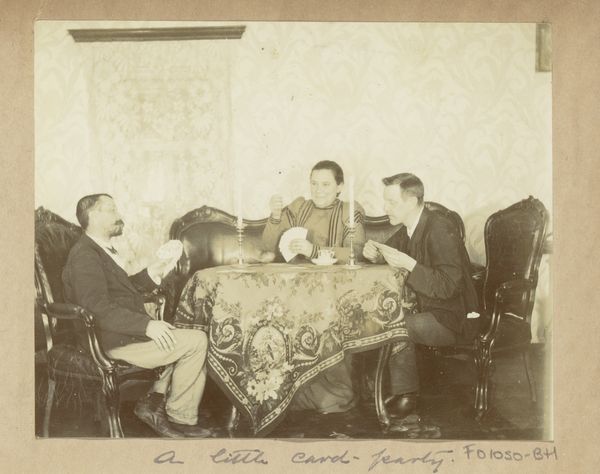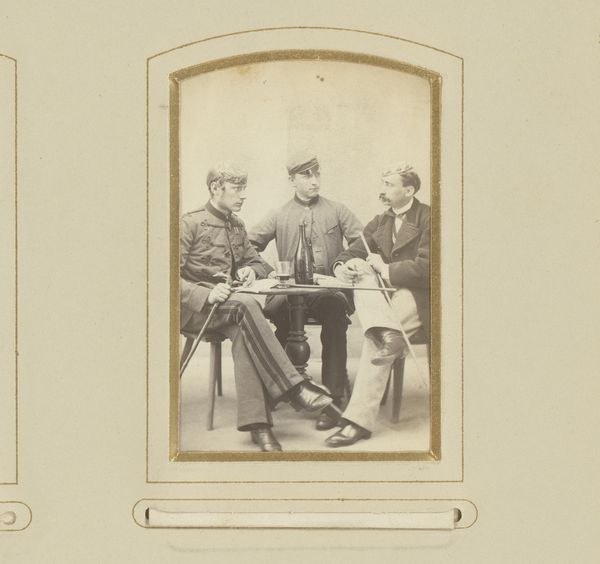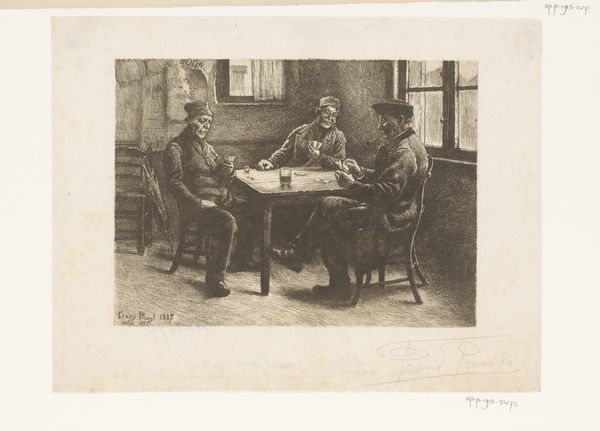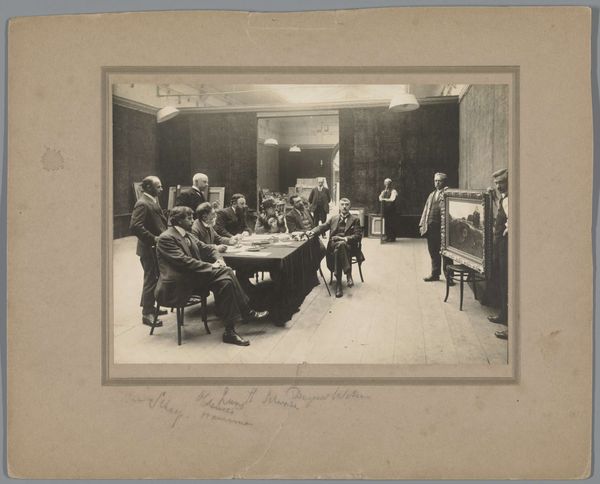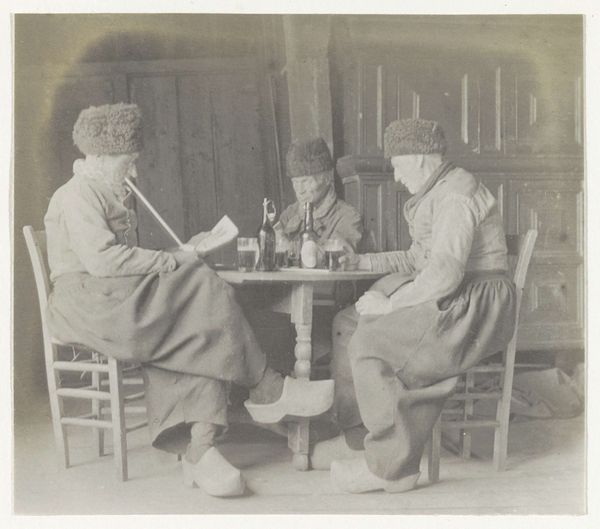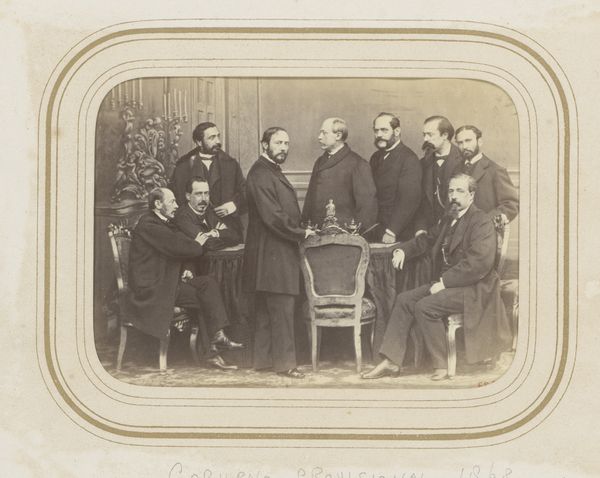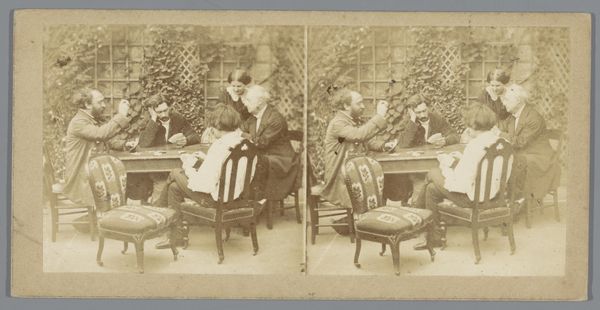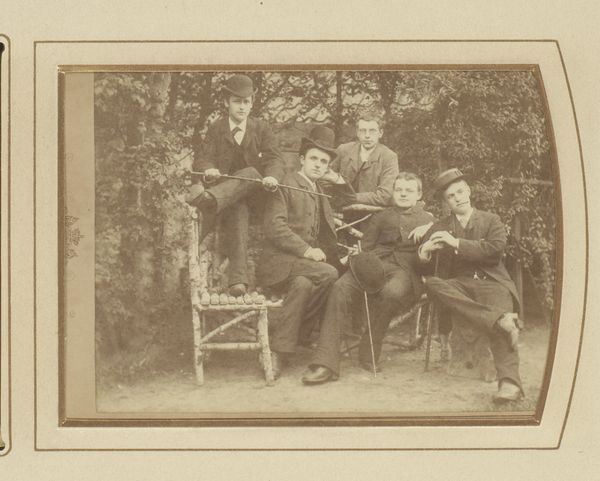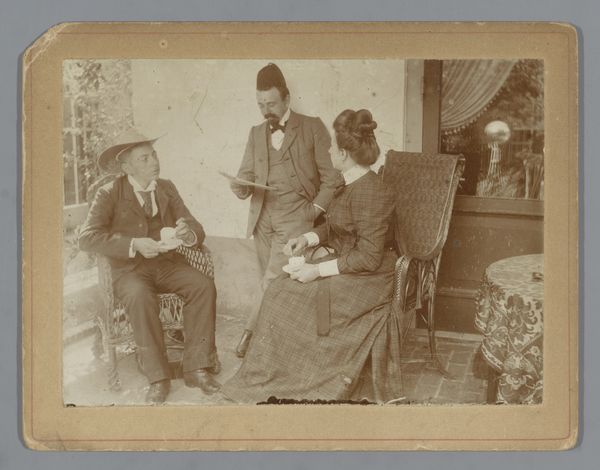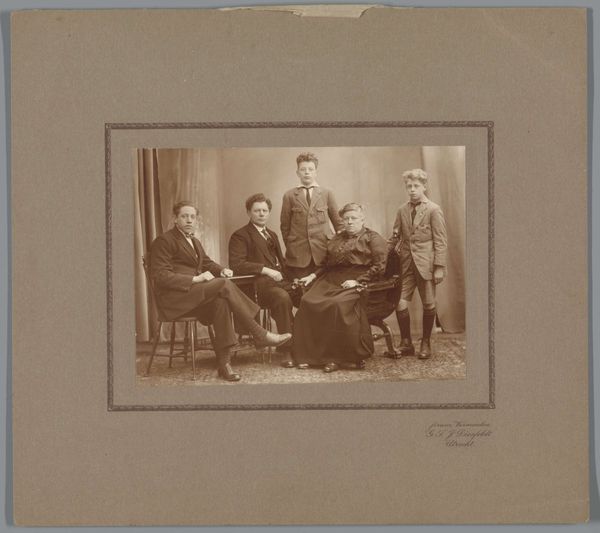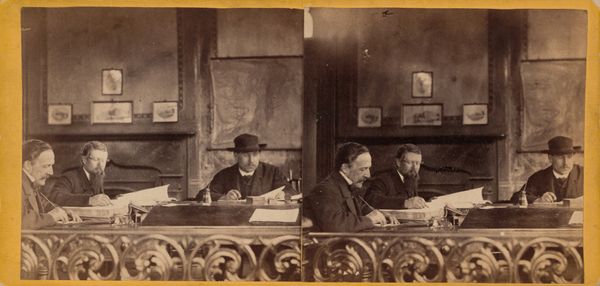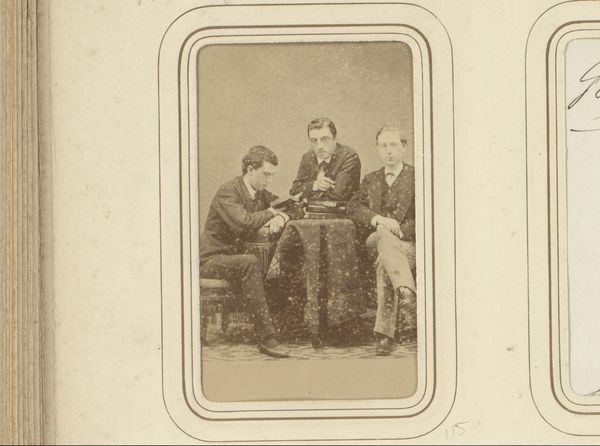
Philippe Zilcken, Marius Bauer en Jan Veth bij de etsdrukker Martinus Mouton in Den Haag 1886
0:00
0:00
photography, gelatin-silver-print
#
portrait
#
impressionism
#
photography
#
gelatin-silver-print
Dimensions: height 188 mm, width 246 mm
Copyright: Rijks Museum: Open Domain
Curator: Joseph Jessurun de Mesquita captured this fascinating group portrait in 1886. The piece, entitled “Philippe Zilcken, Marius Bauer en Jan Veth bij de etsdrukker Martinus Mouton in Den Haag,” is a gelatin-silver print. Editor: The sepia tones lend a feeling of almost unbearable solemnity. I'm drawn to how all of the figures seem lost in thought, except for the one man staring directly into the lens. His eyes pull you in immediately. Curator: The setting of a printing shop is crucial. In focusing on the labor and camaraderie inherent in the artistic process, the photo destabilizes notions of the singular, genius artist, directing our attention to the collaborative social relations of artistic production in late 19th century Netherlands. Editor: Absolutely. The print shop becomes almost sacred, a modern temple of creativity, if you will. Note the repetition of circular forms: the hats, the heads, the chair backs, echoing the cyclical nature of printmaking itself. Curator: Yes, and consider how the clothing and pose signal certain power dynamics: those in bowlers occupy seats of power while the figure standing over them takes on a role as observer and helper. I wonder about class dynamics, too. Are those standing forced into positions of servitude to those sitting, as the figures literally loom over them? Editor: Perhaps. The bowler hat as a symbol of bourgeois stability is fascinating, even when cocked jauntily on the wearer’s head! It almost dares us to challenge the wearer’s authority. I see the window behind them, too. Does that signify progress and the movement of creative ideas? Curator: The window could certainly serve as a metaphor for societal visibility, especially since all members in the picture are men. The under-representation of women is a constant problem in arts at this historical period. Editor: This makes me want to dive more into symbolism in early photography as a way to access memory, collective and personal. Curator: For me, too. The power dynamics on display really invite interrogation as to the relationship between artistic production and wider cultural inequalities of that era. Editor: Such a fascinating print. Thank you for the insight.
Comments
No comments
Be the first to comment and join the conversation on the ultimate creative platform.

